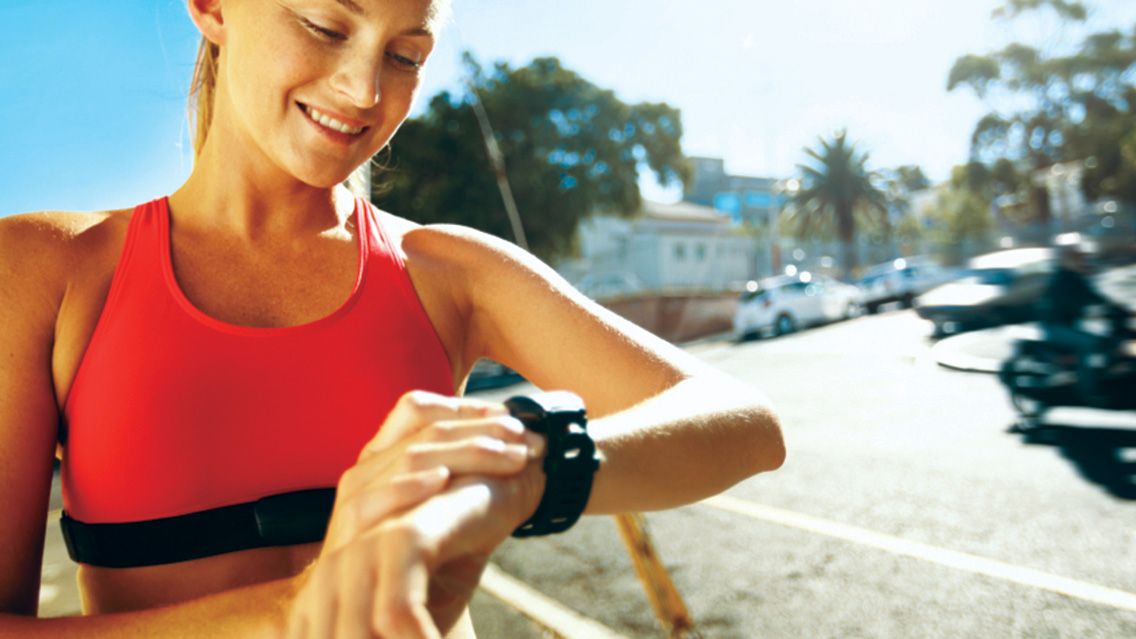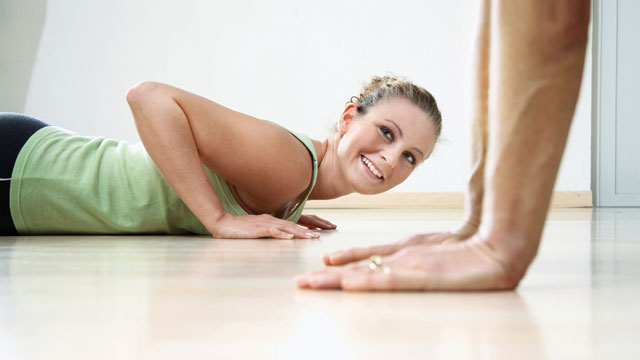Q1: Increasing Running Speed
I’ve been running a mile a couple of times a week for the past month. Each time, I try to beat my previous effort. My time isn’t improving, though. How can I speed up?
A: It sounds counterintuitive, but try running slower and for a longer distance — at least at first. “One of the best ways to build speed is to increase the physiological infrastructure capable of supporting a higher intensity of exercise,” says Janet Hamilton, MA, CSCS, founder of Running Strong, a coaching service in Atlanta. “That’s best accomplished by running at an aerobic pace substantially slower than your best effort — in other words, not by trying to go out and improve your time day after day after day.”
Your body recognizes the “overload” of the longer distance and strives to adapt by making your heart bigger and stronger, multiplying and expanding blood vessels and mitochondria, increasing blood volume, and strengthening your muscles and connective tissues (your ligaments and tendons). This takes time, says Hamilton, so you won’t necessarily see changes from one run to the next, but over a few weeks your stamina will improve, and so will your speed. By training your body to sustain efforts in excess of a mile, you’ll find that you become faster than you were when you were doing a mile at a time. (Note: Don’t increase your distance by more than 10 percent each week.)
This doesn’t mean you should limit yourself to lengthy runs, though. Hamilton recommends alternating longer days with shorter ones so you’re not always going the same distance. Also include strength-training sessions, sprint workouts and form drills to improve running mechanics and the force production behind each stride. All of this will lead to more speed.
(For more, see “How to Increase Your Running Speed.”)
Q2: How to Progress Pushups from Knees to Toes
I can’t do a lot of regular pushups, but doing them from my knees feels so much easier. Would I be better off doing a few the “real” way than a whole bunch from my knees?
A: In our view, yes. Bent-knee pushups feel like a Caribbean vacation compared with toe pushups, because you’re cutting the lever of your body by around 30 percent and changing the angle of the exercise so you’re not fighting gravity as much. This lightens the load substantially. Unfortunately, it also detracts from the benefits you reap: core, shoulder and back strength; better body control and coordination; and good scapular stability. Don’t get us wrong: You still develop those things even if you’re not on your toes — just to a lesser extent.
So, if you can do even one or two regular pushups, do them. When you can’t do any more, do as many more as you can from your knees. And for those who can’t yet do a regular pushup, make it a goal, because doing an ever-increasing number of bent-knee pushups isn’t ideal.
Jim Smith, CSCS, strength coach at DieselSC.com, concurs. He suggests evolving from knee pushups to a combination of knee and toe pushups, then transitioning entirely to toe pushups. Smith, a renowned performance-enhancement specialist, also notes that since full pushups require you to stabilize your entire body, you need to build core strength along with upper-body strength to do them well.
He put together the following progression to help you reach your goal faster. Complete three to four sets every other day until you feel ready to progress to the next step. Tighten your core, glutes and upper back, and don’t let your hips sag. If form deteriorates, stop the set and rest before completing another rep.
Step 1: One regular pushup (or attempt at a regular pushup); five to eight reps of knee pushups; 30-second plank hold. Rest 60 to 90 seconds between sets.
Step 2: Two regular pushups (or one attempt at a regular pushup); eight to 10 reps of knee pushups; 30- to 60-second plank hold. Rest 60 to 90 seconds between sets.
Step 3: Three to four regular pushups (or one attempt at a regular pushup); eight to 10 reps of knee pushups; 60- to 90-second plank hold. Rest 60 to 90 seconds between sets.
Q3: Hotel Workouts
I have a business trip next week and don’t want to ditch my fitness routine. Any good workouts I could do in my hotel room?
A: We’re hooked on do-anywhere workouts from Craig Ballantyne, MS, CSCS, founder of TurbulenceTraining.com. He’s always filming killer strength-and-metabolic circuits that involve little or no equipment — and he designed this hotel-room circuit just for on-the-go people like you. A bonus: You won’t need a lot of time. “You’ll alternate between lower-body and upper-body exercises, with some total-body core exercises thrown in,” he says. Enjoy!
The Rules:
- Start easy, and do only half the reps in the first round (this will get you warmed up).
- Don’t rest between exercises.
- Rest one minute at the end of each full circuit, and repeat as many times as possible in 20 to 30 minutes (or whatever time you have available).
The Exercises:
- 1. Prisoner Squats: 20 reps
- 2. Pushups: As many as possible, stopping just short of failure
- 3. Reverse Lunges: 15 per side
- 4. Plank: 60 seconds
- 5. Split Squats: 12 reps per side
- 6. Close-Grip Pushups: Up to 25 reps
- 7. Side Plank: 30 seconds per side
- 8. Jumping Jacks: 1 minute
See ELmag.com/ballantyneworkout for a video demo, and check out more of Ballantyne’s workouts at www.youtube.com/user/cbathletics.
Other Tips:
Book a hotel with decent workout facilities (ask about available equipment; some will even stock your room with dumbbells and the like). Also, consider packing something versatile and portable, like a TRX or other suspension-training device (www.trxtraining.com). Lastly, read “Have Body, Will Travel” and “Workday Workouts” for more on staying fit on the go.



This Post Has 0 Comments